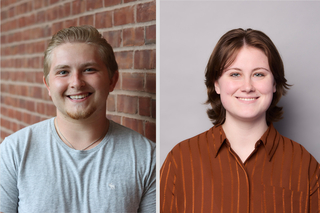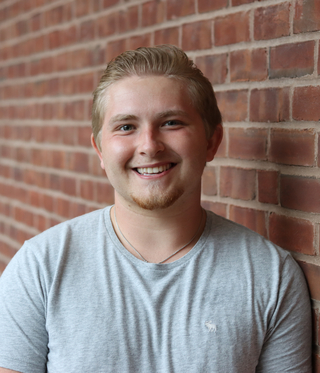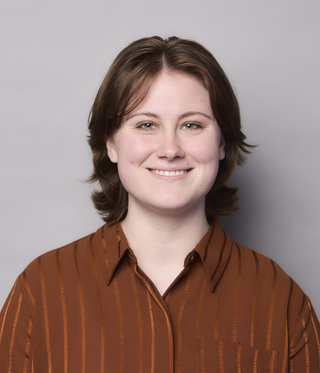Chemistry students Zach Boyer and Dalaney Westbroek have been selected for the prestigious National Science Foundation Graduate Research Fellowship Program (NSF GRFP) for their potential to make groundbreaking research achievements.
The five-year fellowship is a significant achievement, as it provides three years of financial support, including an annual stipend of $37,000 and a $16,000 educational allowance.
“Having my own funding means I have the autonomy to pursue my own independent ideas and research,” said Boyer, a 2nd-year graduate student from Professor Jon Ellman’s lab.
To secure the fellowship, he and Westbroek both submitted proposals to the NSF in which they pitched research projects and outlined their efforts to advance STEM, a major goal of the program.
Boyer works in the Ellman Lab, which develops synthetic methods to access pharmaceutically relevant chemical motifs and structures. Through his research, he aims to characterize asymmetric sulfur compounds, which are important in drug discovery for biomolecular recognition.
Westbroek’s research, on the other hand, has a different focus. As a senior undergraduate student in Professor James Mayer’s lab, they study the fundamental mechanisms behind chemical changes in materials as they interact with different interfaces. This research has implications for sustainable fuel production and carbon dioxide conversion.
“What’s particularly meaningful about the NSF GRFP is that they are not just funding the science. They’re funding you, and they believe in you,” said Boyer, who claims to be “just a kid from the coal region.”
“I’m proud of where I’m from. I have my area code, 570, tattooed on my ankle. My whole family either worked in the mines or factories, and as a kid, that’s what I thought my future was going to be.”
Boyer credits where he is today to mentors and donors who supported him as he discovered his love of chemistry. As his way of paying it forward, he goes back home to talk to kids about careers in science. “Because without somebody doing that,” he says, “we don’t have the next generation of leaders, scientists, and thinkers.”
Westbroek also guides students as a peer mentor in the Chemistry Department. They were chosen for the role because of their background and academic perseverance.
“I started out at a rural public school in Georgia,” they said. “My school was across from a cow field. I saw going to university as my way to explore the world. I had felt like a big fish in a little pond, and I knew I was going to the big pond.”
Right before Westbroek started at Yale, they contracted a very aggressive form of parasites. The treatment, which lasted the full academic year, left them exhausted – physically, mentally, and emotionally. Although they felt constantly behind, they stuck with the program.
Today, as a peer mentor, Westbroek meets with students and encourages them as they navigate their own challenges.
“I get asked everything from ‘How do I get a research opportunity?’ to ‘Do I belong at Yale?’ to ‘Do I belong in the department?’ My answer is always ‘Yes! This program is designed to see you succeed and do the best research possible.’
Despite whatever differences we have demographically, we are all amazing friends because we love chemistry. That’s how we met. That’s how we talk. That’s how we continue to get together, and that has sparked deeper friendships that go beyond chemistry, but that’s where it started – a genuine human connection that sparked out of a love for science.”
Learn more about the fellows’ research below.


